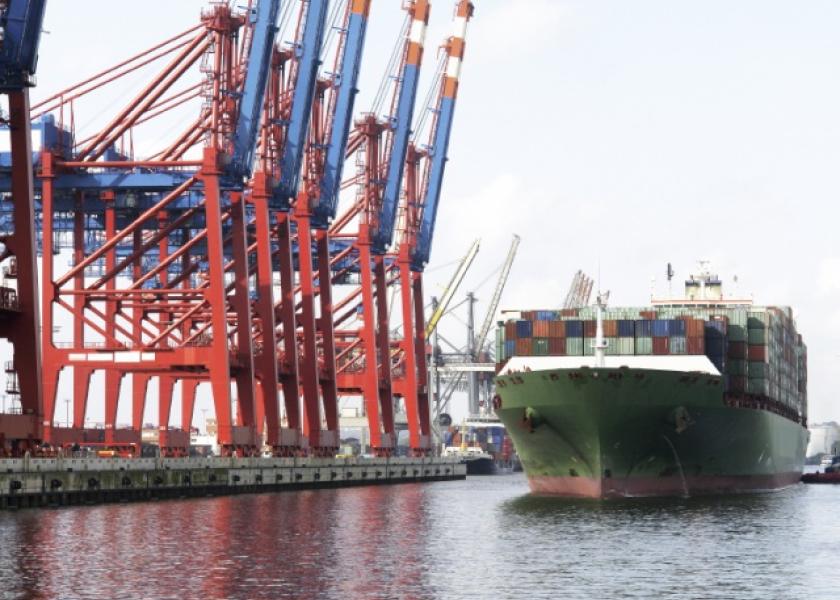International Market Providing Support

Cattle and beef prices in 2017 were much stronger than anticipated. One of the reasons for price strength was international trade. The obvious boost to domestic cattle and beef prices is exports. The ability to move more beef product, whether it be to domestic or foreign consumers, is generally positive to the cattle industry. Additionally, imports can also positively influence domestic beef and cattle prices.
At the time of this writing, trade data for January through November was available. Beef and veal exports the first eleven months of 2017 totaled just over 2.6 billion pounds on a carcass weight basis which was 13 percent greater (300 million pounds) than the same eleven months in 2016.
Japan remains the number one international destination for U.S. beef and veal. Exports to Japan in 2017 through November were nearly 767 million pounds, an increase of 27.6 percent compared to the same months in 2016. The number two destination, South Korea, increased U.S. beef and veal imports 6.1 percent compared to 2016 and imported 430.5 million pounds from January through November. Mexico imported nearly 383 million pounds the first eleven months of 2017 which is a 7.5 percent increase from the same months in 2016. Hong Kong overtook Canada in the fourth spot totaling 289.5 million pounds which is an 11.1 percent increase from 2016 while exports to Canada increased 2.3 percent and totaled 283.6 million pounds.
Another interesting story in the beef export market is China. Beef exports to China have been slowly increasing since June 2017. Prior to June, a direct beef market to China was not open. However, from June through November, beef exports to mainland China totaled just over 7 million pounds with 5.5 million pounds of that total being exported from September through November. This is a small percentage of total exports and an even smaller percentage of total production. However, the Chinese market could easily become a boon to the U.S. beef industry.
It is also important to note the major beef and veal export destinations are those associated with NAFTA (North American Free Trade Agreement) and TPP (Trans Pacific Partnership). The United States has already stepped away from TPP and it is integral favorable trade agreements with these countries are reached so U.S. beef can compete with other beef sources from a financial standpoint. Similarly, the renegotiations of NAFTA have had troubled waters. The cattle and beef industries will continue to watch this situation closely as the final product could either be a small positive or a large negative.
The beef import market is a much different situation from the export market. Beef imports to the U.S. from January to November of 2017 totaled 2.78 billion pounds which is a 1.0 percent decline from the same months in 2016.
Canada has taken over the top spot as the number one import source of beef for the United States. Imports from Canada totaled 686.7 million pounds the first eleven months of 2017 which is a 2.9 percent increase from the same months in 2016. Australia imports from January through November 2017 declined 11.9 percent compared to the same time period in 2016 and totaled 642.2 million pounds. Mexico outpaced New Zealand through the first eleven months of 2017. Imports of Mexican beef increased 19.9 percent compared to 2016 to 537.1 million pounds while New Zealand sourced beef declined 10.9 percent to 521.7 million pounds.
The United States remains a net beef importer which is worrisome for many cattle producers. However, both imports and exports add value to the beef industry. Beef exports increase total quantity of beef sales resulting in selling more beef to more places. Beef exports also add value by selling beef products at higher values. This is sometimes achieved by selling high valued products at higher prices, but is more often achieved by selling products with a low value domestically to an international market with a higher value. Alternatively, the import market is driven by ground beef and lean trimmings. Lean trimmings are imported to blend with fed trim which increases the value of fed cattle carcasses. Similarly, if lean trimmings were not imported, some steers and heifers would have to be produced as non-fed beef to meet ground beef demand or additional lean cuts from fed carcasses would have to be ground. Both of these scenarios would reduce the value of carcasses and animals domestically.







